We put together our Amber Ale Recipe Creation Guide and Amber Ale Recipe quite some time ago, and with the weather starting to cool down here with Autumn finally settling in, we decided it was time to bring this one to life.
A couple of substitutions to our recipe needed to be made - firstly, the base malt needed to be changed from Maris Otter to American Ale malt as our local home brew shop didn't have sufficient supply. The same for yeast - we had initially planned to use US-05 for this one but ended up going for BRY-97 as that was all we could get. In any case, the result should still be good!
Here's our ingredients all laid out - though we've opted to skip Nottingham this time around and go with BRY-97.
Our pale chocolate malt wasn't milled yet either, but since we need such a small amount we decided to DIY it with a zip-lock bag and a rolling pin. Because why not?We setup our BrewZilla 3.1.1 and Digiboil to pre-heat their water for mashing and sparging duties.
Whilst waiting for our water to heat up, we weighed out and added our water salt/mineral additions with the 3 usual suspects (calcium sulfate, magnesium sulfate and calcium chloride), along with a campden tablet for removal of chlorine from the water.
We added some phosphoric acid to our sparge and mash water to get the pH down to within the 5.2 - 5.6 range as well.
After our BrewZilla reached strike temperature we added the grain - it's definitely easier and preferable to make this a 2 person job so one can add the grain and the other can stir it in - this definitely seems to help reduce clumping and dough balls from forming.
After leaving the grain bed to settle for 10 minutes, we took a pH meter reading to find we were spot on with where we wanted our pH to be - around 5.3. Pretty amazing how accurate brewing software like Brewfather can be with predicting this.
We then began recirculating the wort via the built in BrewZilla pump. A lack of wheat in this grain bill meant recirculation was fairly good and didn't require much extra effort or attention.
We mashed this one a little higher than normal at 67°C to help promote a fuller body and have less fermentable sugars in the wort.
After an uneventful 60 minute mash, we pulled the grain basket and began sparging.
The flow of sparge water back through the grain bed was pretty good so we reached our bre-boil volume of 26.5L reasonably quickly.
We set our BrewZilla to "HH" for boil and took a pre-boil gravity reading using our digital refractometer whilst we waited. 1.051 had us 2 points higher than our expected reading of 1.049.
Next we weighed out our bittering hop addition - 12g of Columbus (CTZ) hops.
Once we reached a boil they were unceremoniously added into the BrewZilla - plenty of foam and hot break forming!
We started our timer for our 30 minute boil and then proceeded to weigh out our other hop additions to be added with 10 minutes left, along with some yeast nutrient and whirlfloc.
The 10 minute additions were then added after 20 minutes had elapsed in the boil.
A late inclusion was to add some centennial hops to the flame out/whirlpool addition to help add some additional flavours. American "C" hops are known to work, so centennial, chinook and columbus seems like a pretty safe bet.
At the end of the boil we chilled the wort down to 85°C and added our flame out hops and let it recirculate using the recirculation arm for 10 minutes before we continued chilling down to yeast pitching temperature.
We then transferred to our Apollo Snub Nose Fermenter.
This is only our second brew using whirlfloc tablets, but the difference they make is significant. These 2 photos were taken about 10 minutes apart, with the first being right after the conclusion of our wort transfer from BrewZilla to fermenter.
You can see how much has settled to the bottom of the fermenter in such a brief period of time, and the snub nose design means it settles into a nice little cone, meaning more of the wort (and beer) can later be harvested from the top after fementation.
Next, we took a gravity reading which gave us a starting gravity of 1.053.
This was confirmed with our floating hydrometer which gave a reading more or less the same - perhaps more like 1.054.
We then pitched a single packet of BRY-97 yeast and left it to do its thing.
Fermentation went relatively smoothly and we had a FG of around 1.014. There was a pretty decent krausen that stuck to our Hydrom and skewed the readings so the true FG was never reached/shown according to the Hydrom.
This FG was a little higher than we anticipated, but in a style like that which allows for a fair amount of residual sweetness we don't anticipate it to be a big issue. Also means the ABV is a bit lower than planned, coming in at 5.1%.


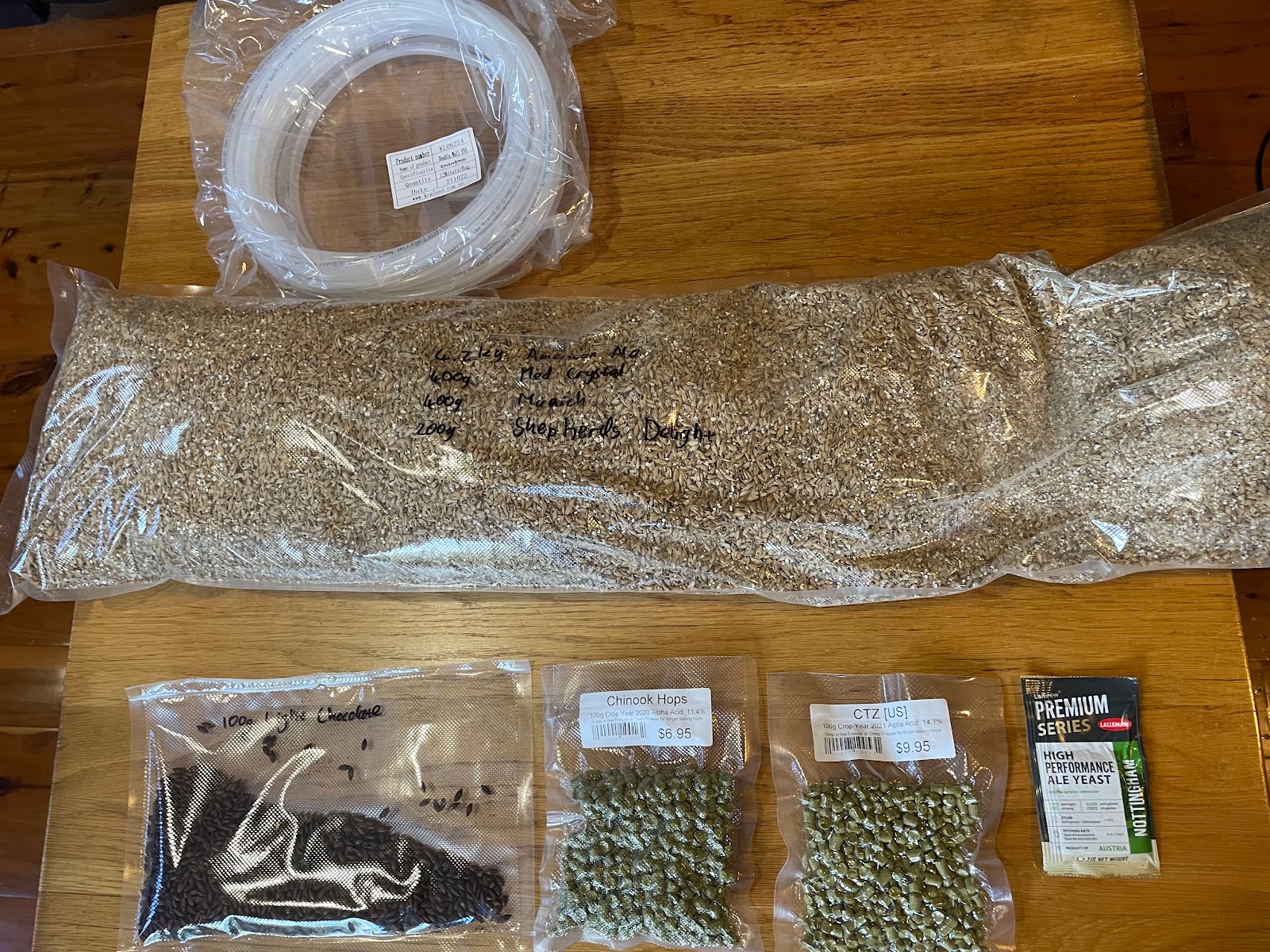





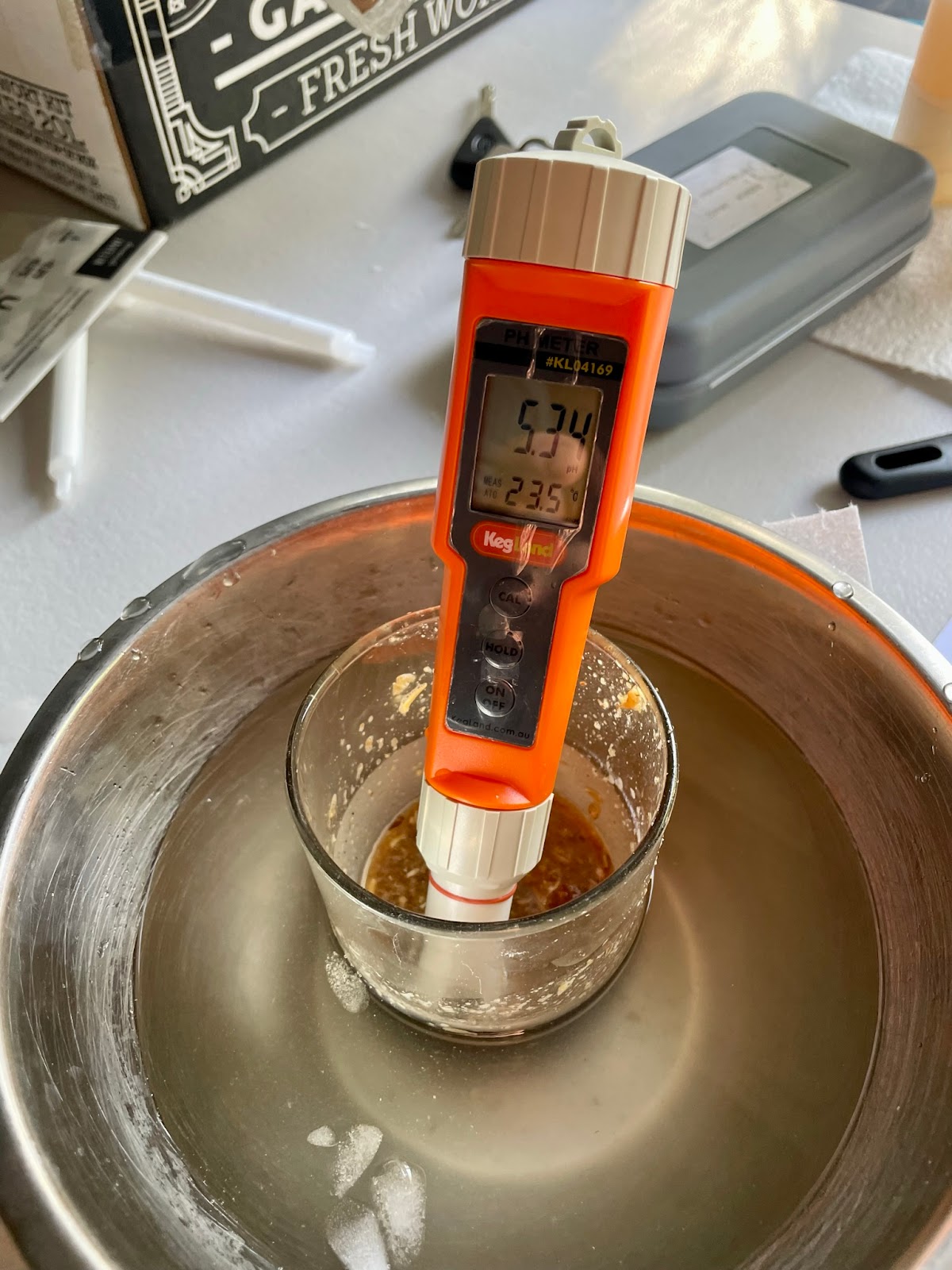
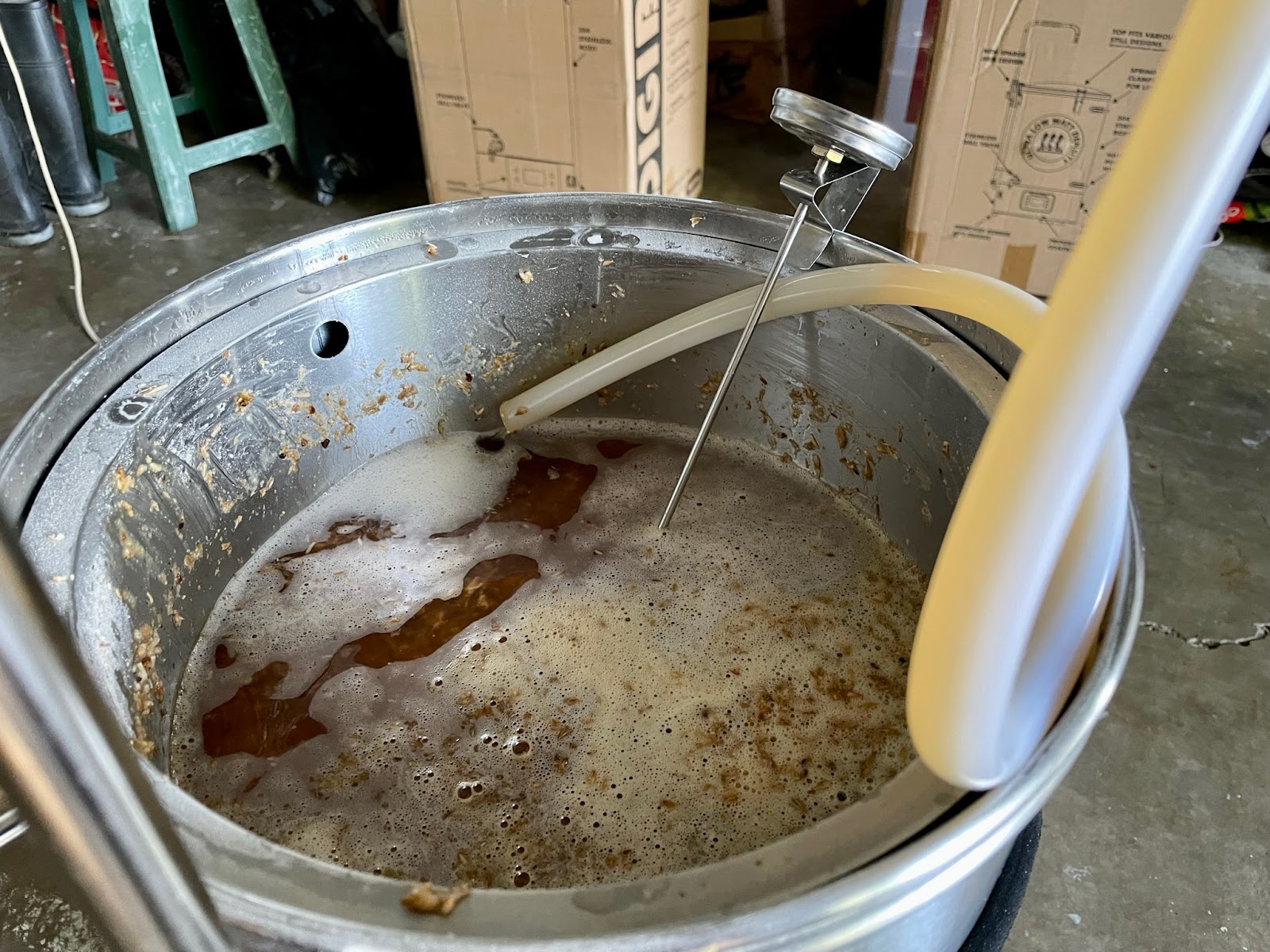
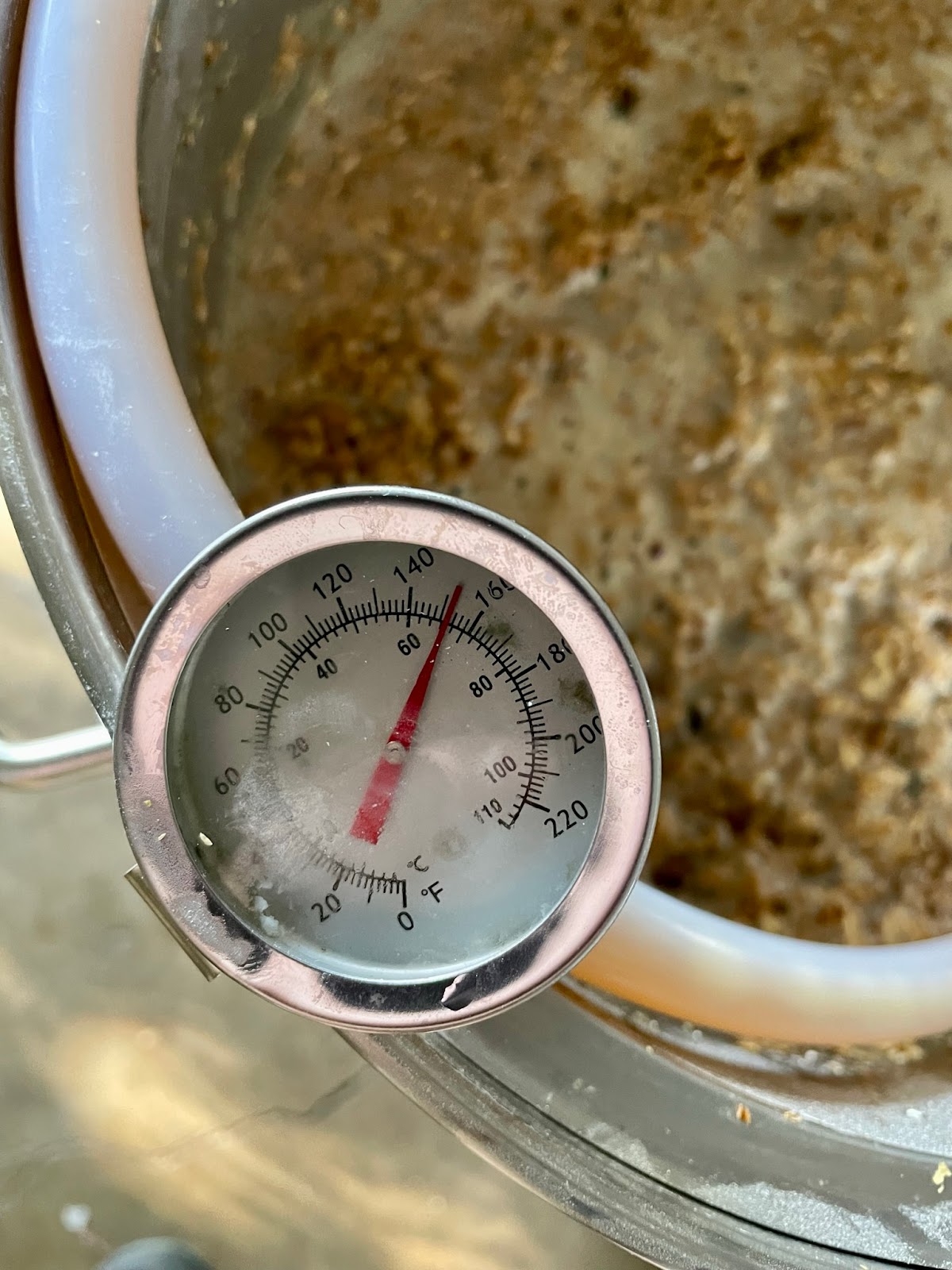








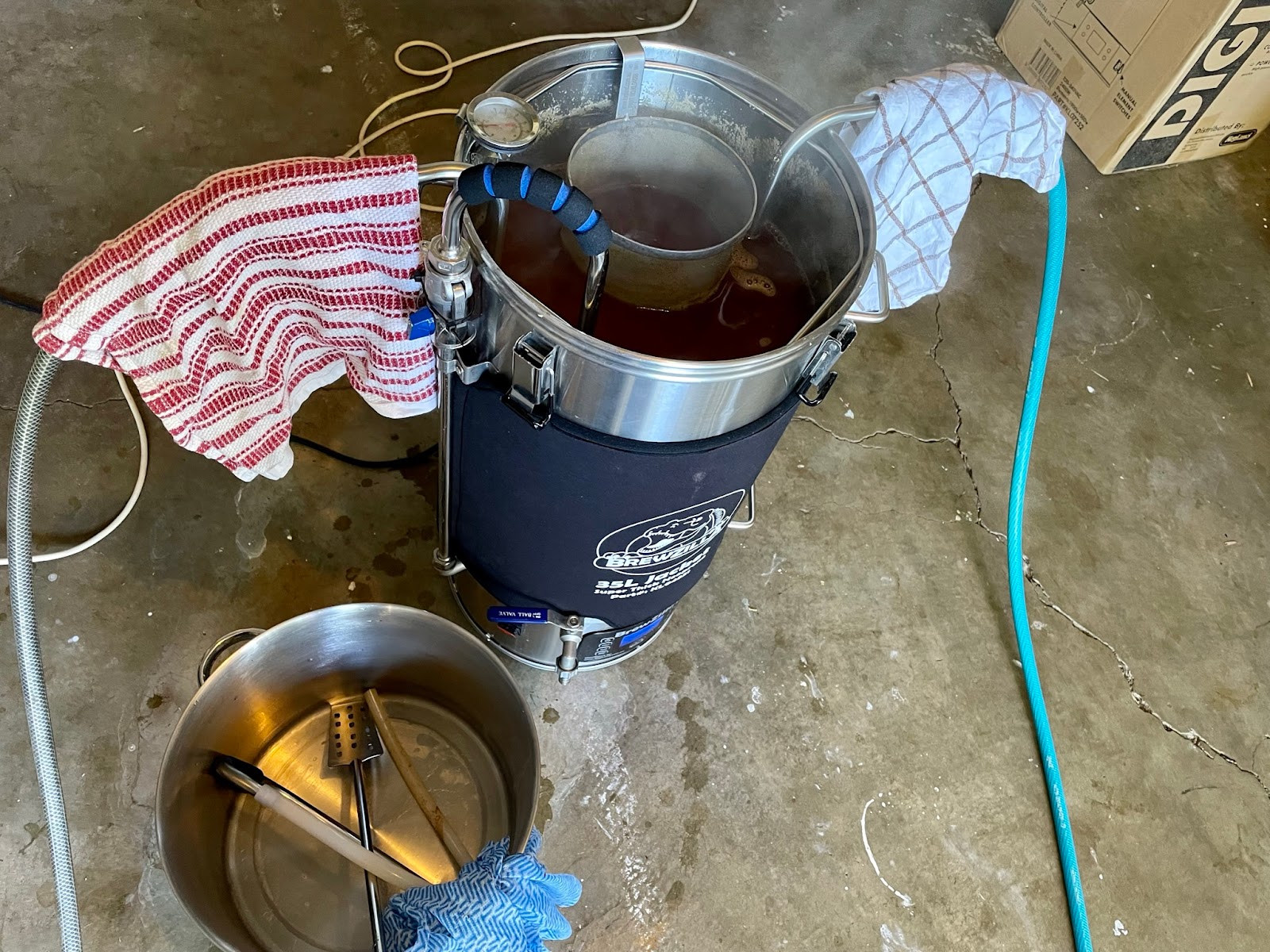
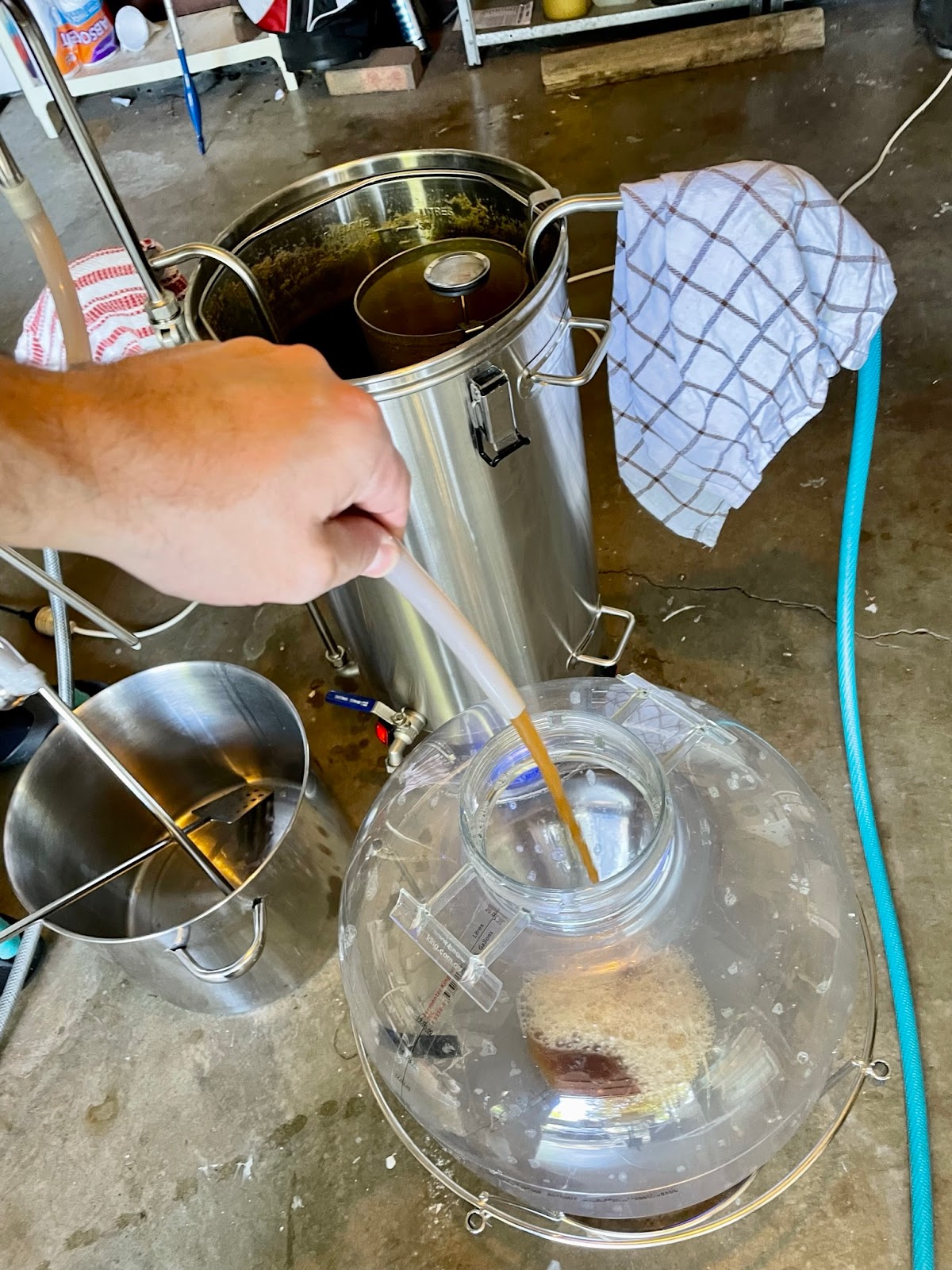


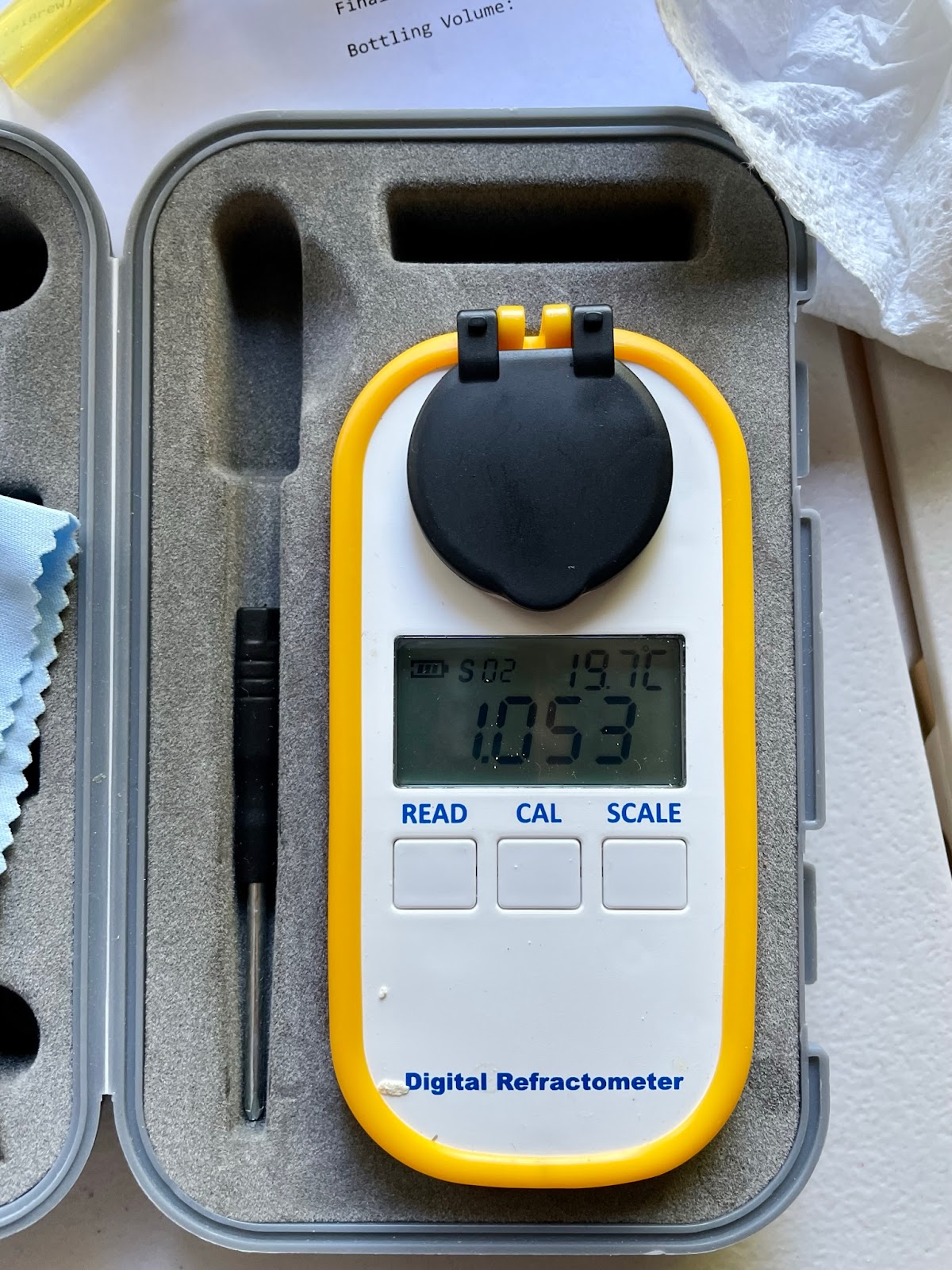







No comments:
Post a Comment